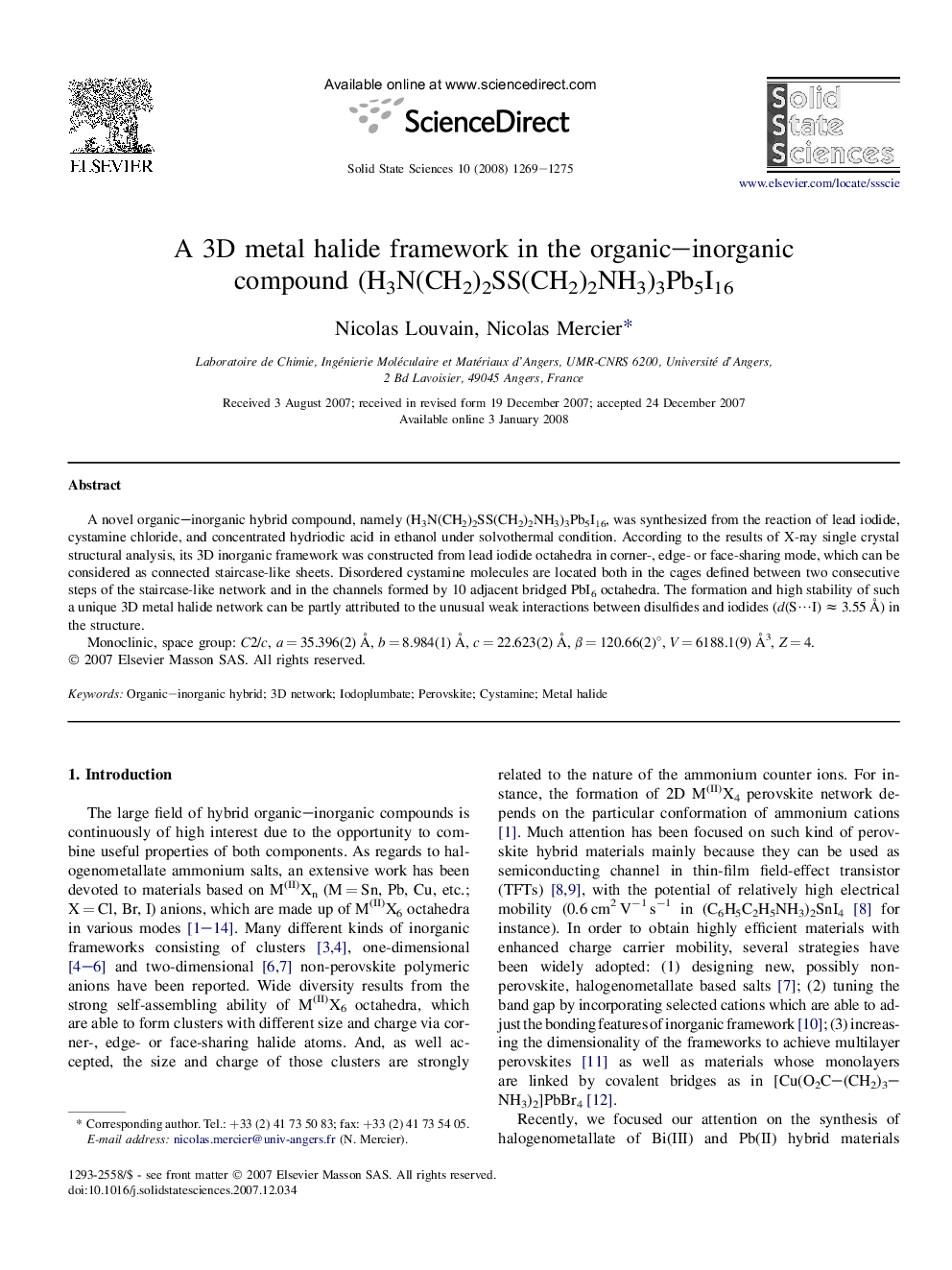| Article ID | Journal | Published Year | Pages | File Type |
|---|---|---|---|---|
| 1506695 | Solid State Sciences | 2008 | 7 Pages |
A novel organic–inorganic hybrid compound, namely (H3N(CH2)2SS(CH2)2NH3)3Pb5I16, was synthesized from the reaction of lead iodide, cystamine chloride, and concentrated hydriodic acid in ethanol under solvothermal condition. According to the results of X-ray single crystal structural analysis, its 3D inorganic framework was constructed from lead iodide octahedra in corner-, edge- or face-sharing mode, which can be considered as connected staircase-like sheets. Disordered cystamine molecules are located both in the cages defined between two consecutive steps of the staircase-like network and in the channels formed by 10 adjacent bridged PbI6 octahedra. The formation and high stability of such a unique 3D metal halide network can be partly attributed to the unusual weak interactions between disulfides and iodides (d(S⋯I) ≈ 3.55 Å) in the structure.Monoclinic, space group: C2/c, a = 35.396(2) Å, b = 8.984(1) Å, c = 22.623(2) Å, β = 120.66(2)°, V = 6188.1(9) Å3, Z = 4.
Graphical abstractThe three-dimensional iodoplumbate framework-based hybrid (H3N(CH2)2SS(CH2)2NH3)3Pb5I16 involving the diprotonated cystamine molecule has been prepared. The 3D Pb5I16 polymeric anion results from corner-, edge- or face-sharing octahedra, and can be described as connected staircase-like sheets. The formation of such an unprecedented 3D network can be partly attributed to the interactions between I atoms from the inorganic network and S atoms from the organic ligands.Figure optionsDownload full-size imageDownload as PowerPoint slide
